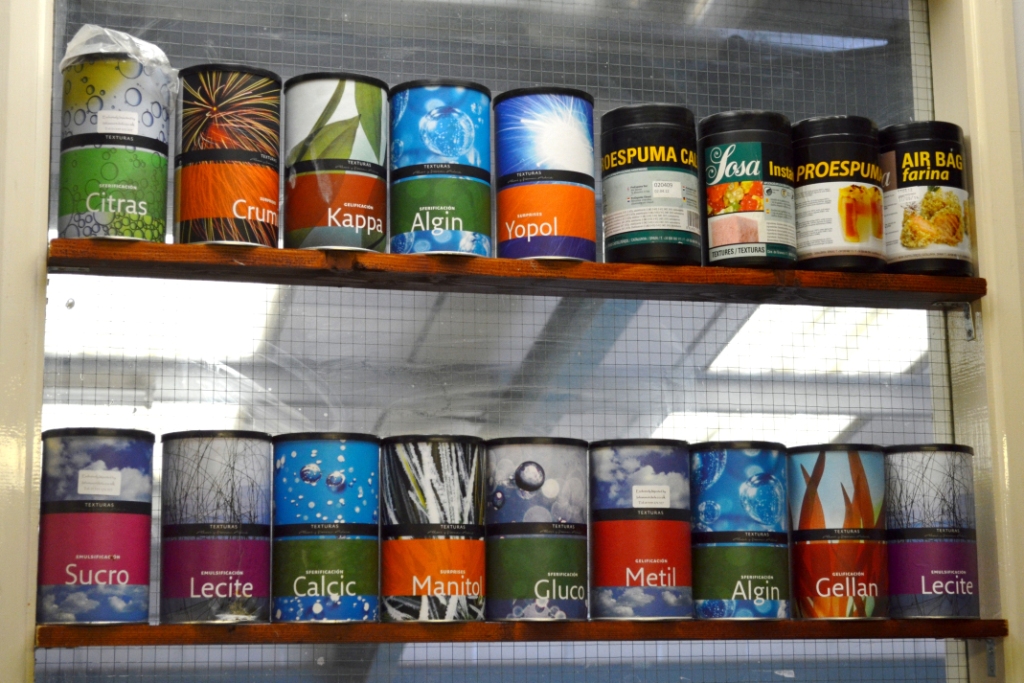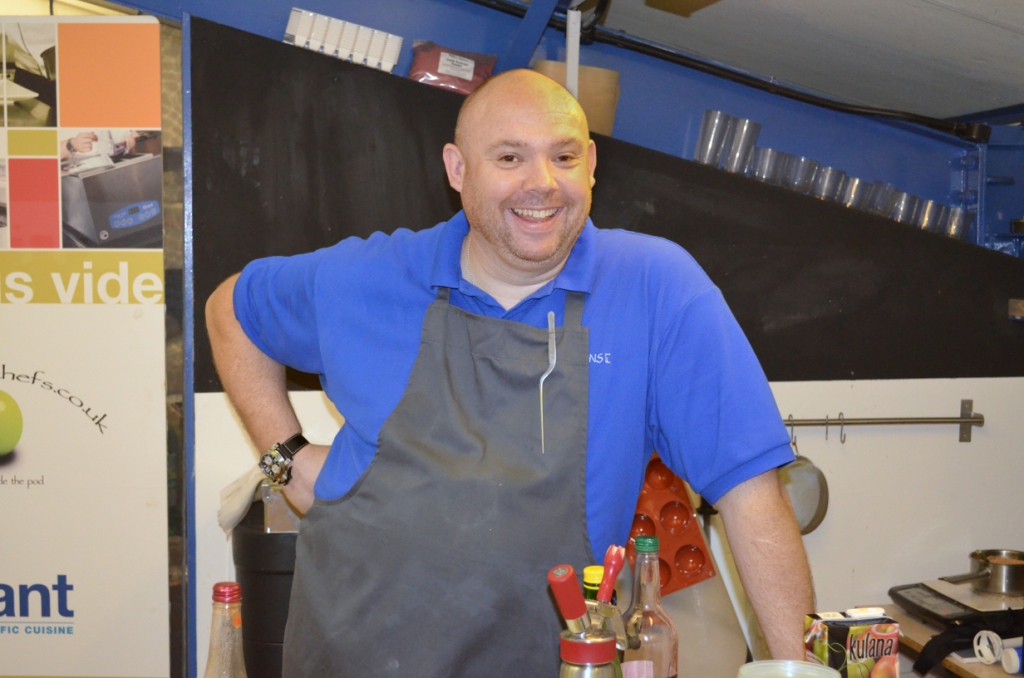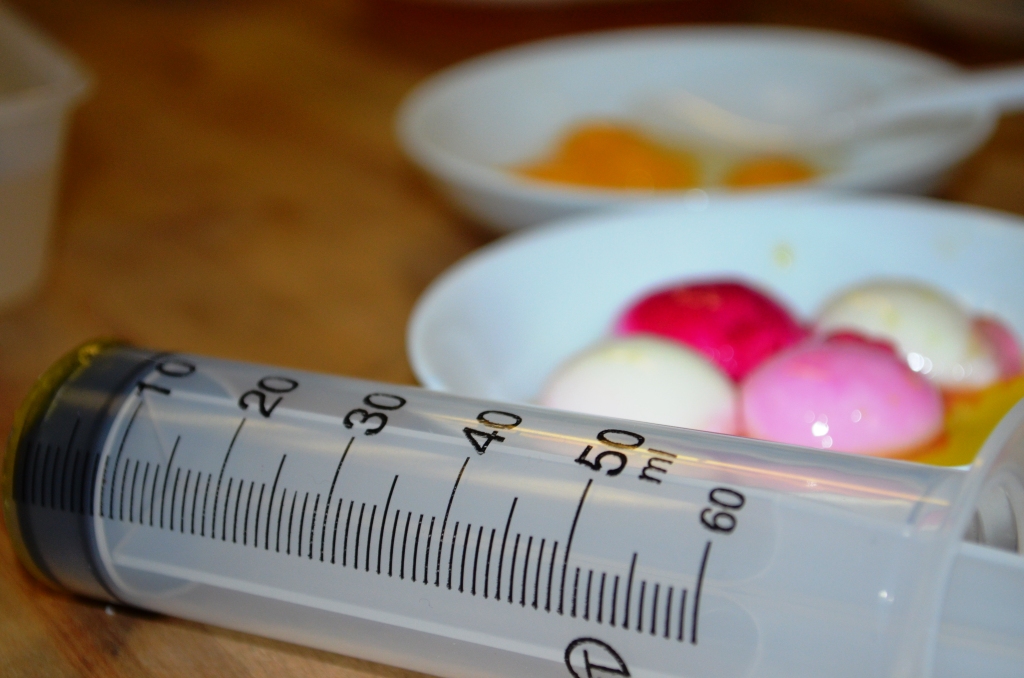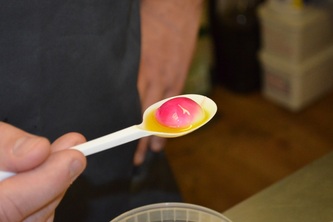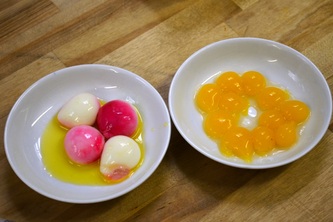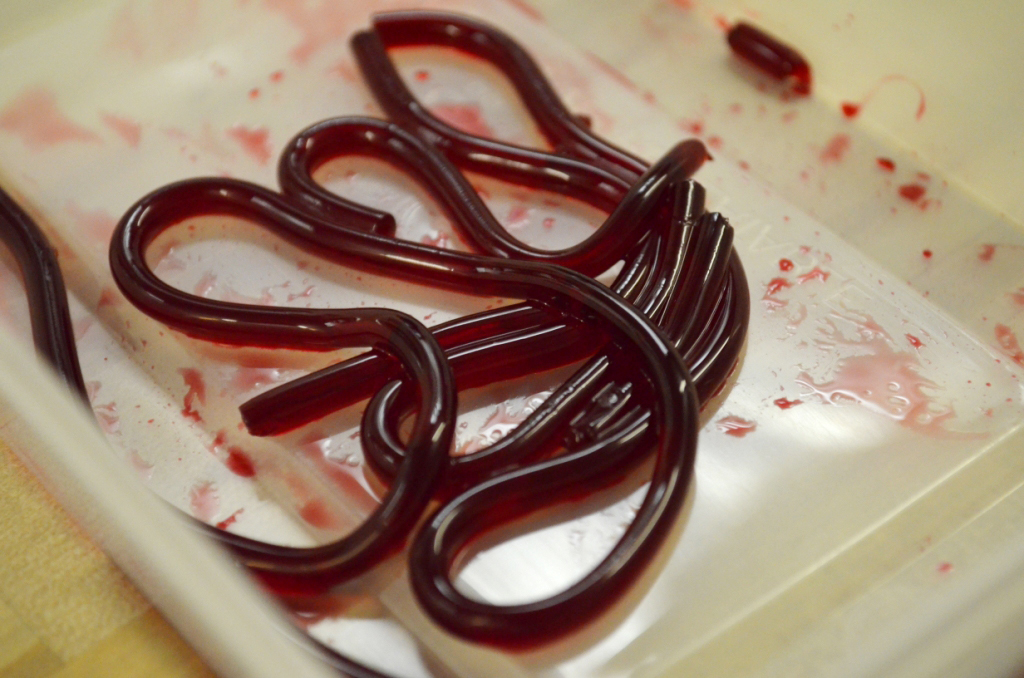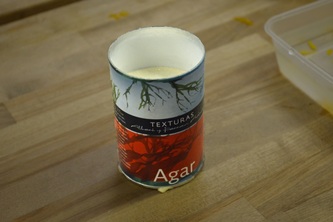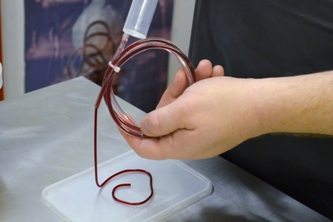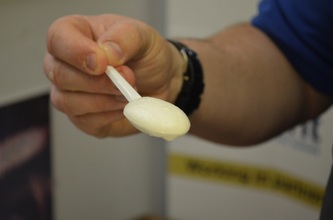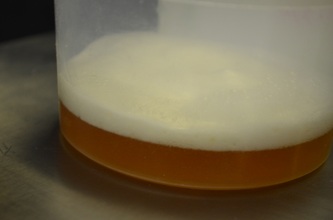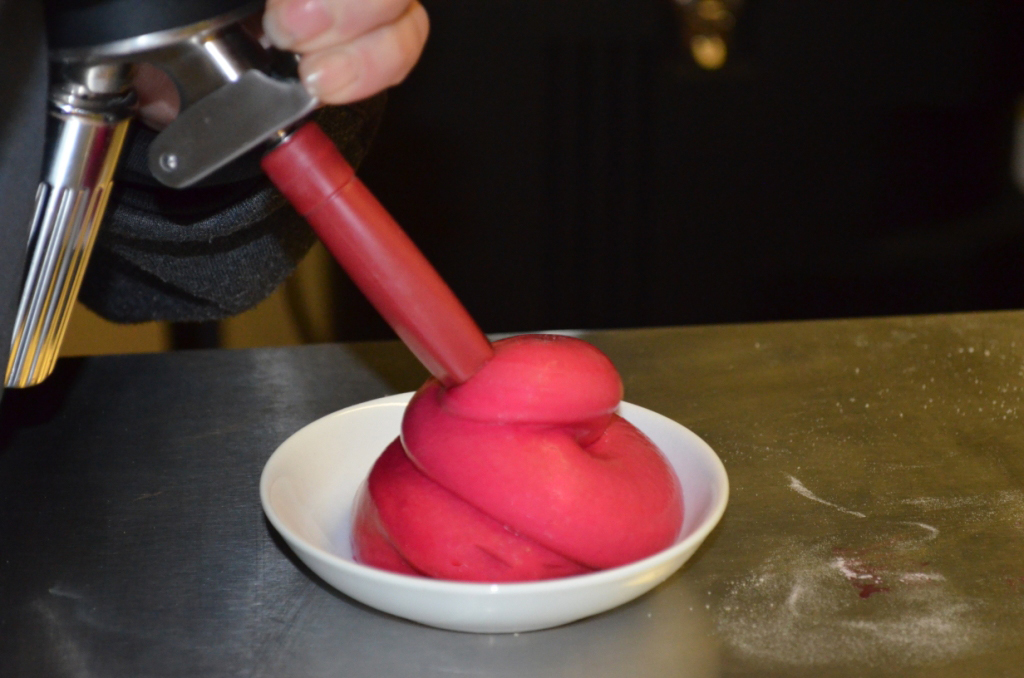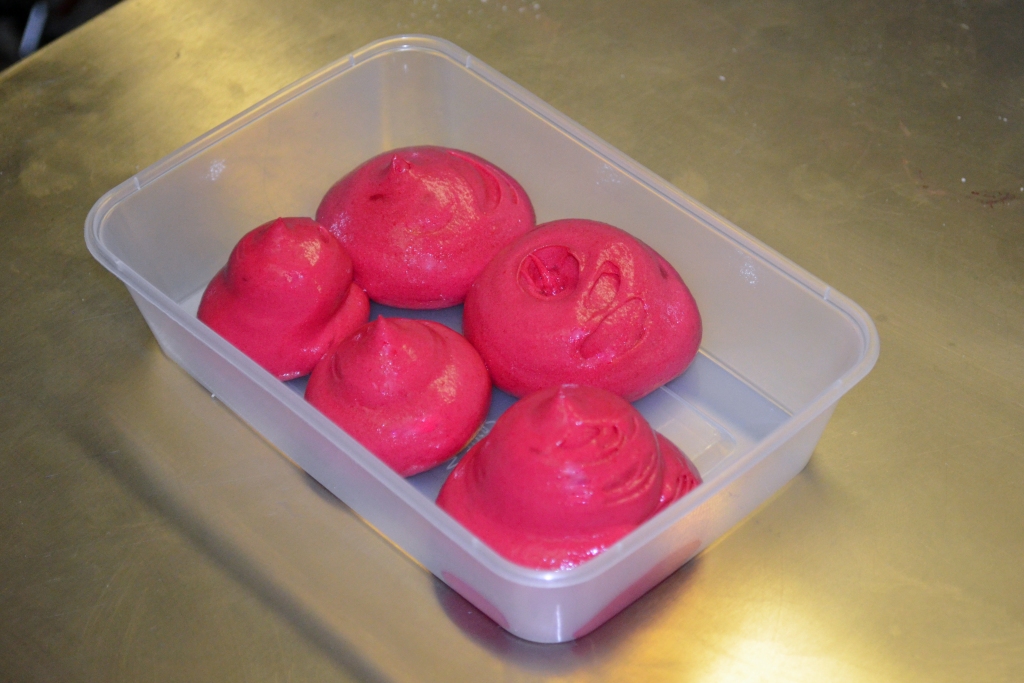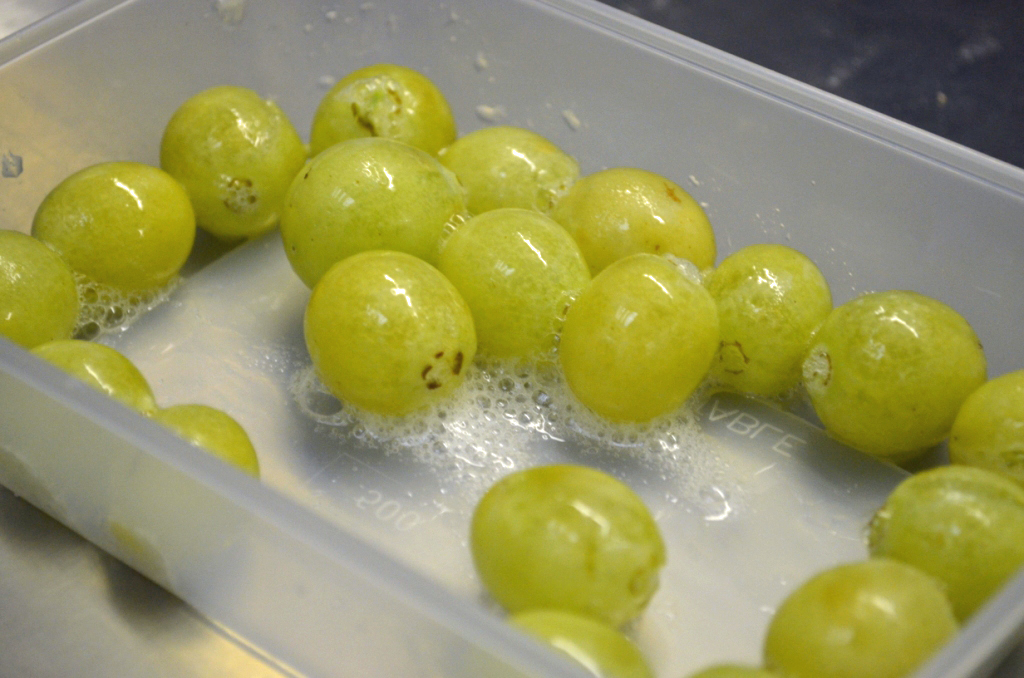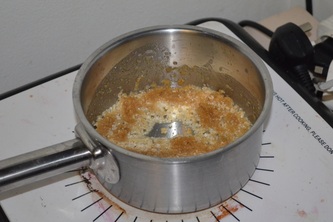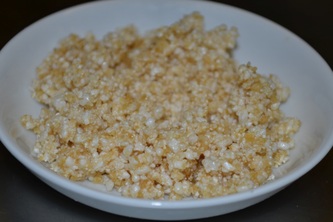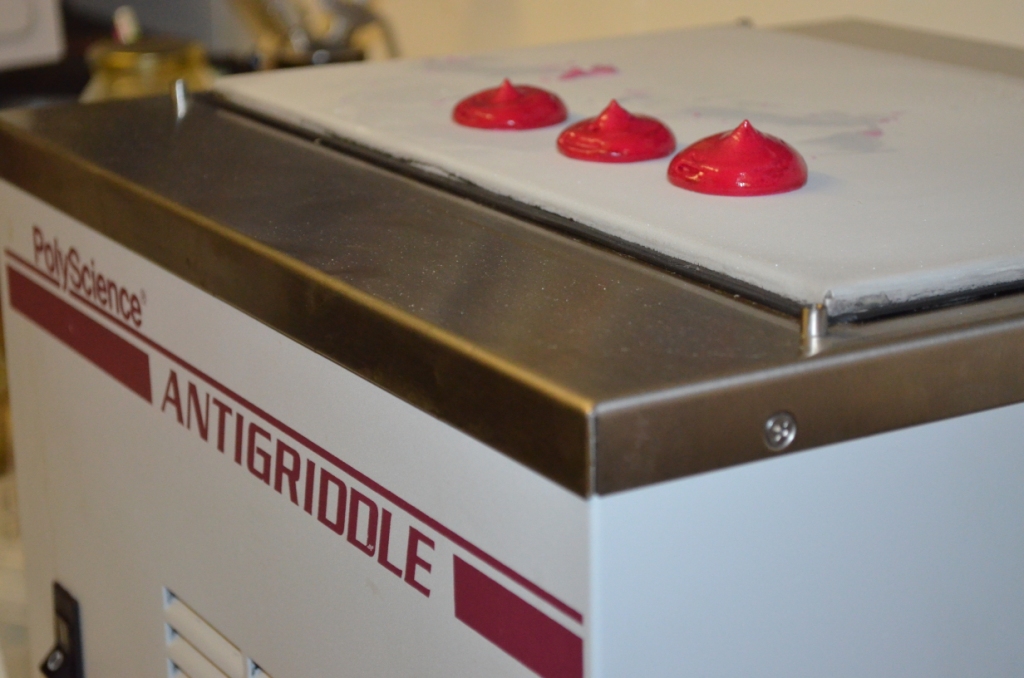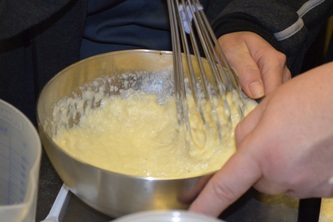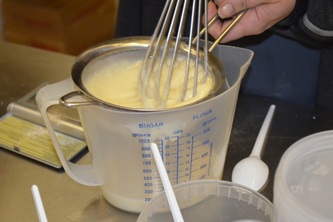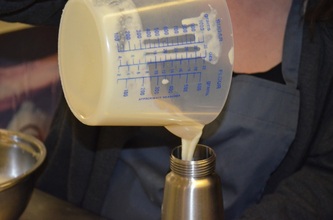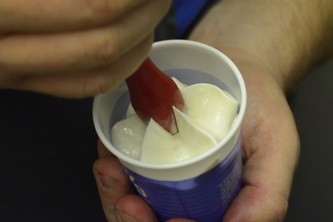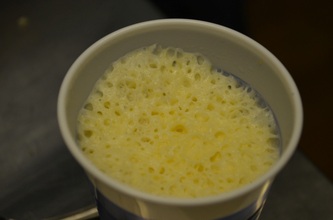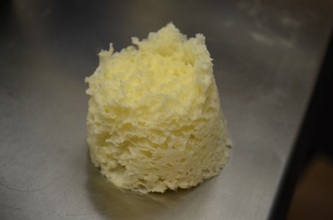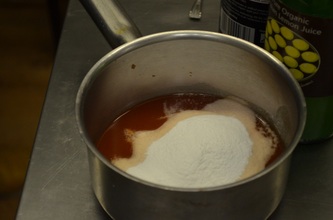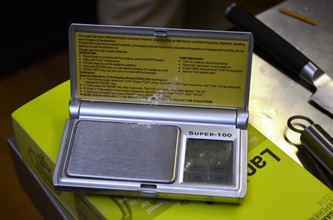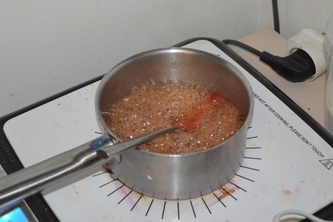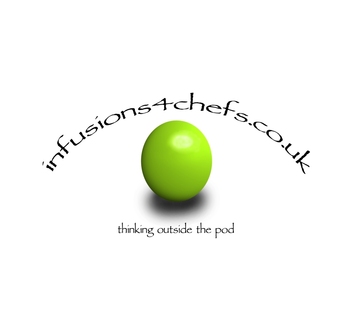
Infusions4Chefs it seems is making it easy for everyone to get involved, from Michelin starred restaurants to the simplest of domestic kitchens by demystifying the whole area and providing online access to everything you need to get started. Endlessly fascinated by what other people do, we were delighted to link up with Infusions4Chefs to peep inside their 'fun room' and to try our own hands at the cooking techniques that have changed the face of contemporary dining.
Entering the 'fun room' (certainly a more apt name than test kitchen), the first thing you notice is that it's not a science lab. We're sure there's a low pressure evaporator somewhere, a centrifuge in the cupboard maybe, but for today, almost everything used is low cost and low tech. Put another way, the barriers to adopting these technique are similarly low, inhibited only by your desire to get involved and willingness to get your apron (rather than lab coat) dirty. Our host for the day, Jeremy Medley, makes everything approachable, filling you with confidence that you really can do this yourself at home.
What you will see that you probably don't (yet) have in you kitchen is containers of semi familiar (?) sounding ingredients like Lecite, Metil and Algin. Take a closer look at the packaging and you'll see written below the Texturas brand name 'Albert y Ferran Adria', for this line is indeed that of the world's most famous chef and restaurant. Elsewhere, you'll see Mugaritz Experiences, the official ingredient line of Mugaritz for Infusion4Chefs is the sole UK importer of these products and therefore the go-to place for those who want to explore. What it also means of course is that Infusions is the real deal.
So where to start our little odyssey? It has to be surely the most famous technique of them all: spherification of course.
We discover there are two methods available here: spherification and reverse spherification. The important element in both is Algin (Sodium Alginate, NaC6H7O6 for real geeks) which is found in brown algae and is a gelling agent/emulsifier. In brief, in (ordinary) spherification, the substance (here mandarin juice) is mixed with an Algin solution and dripped into calcium chloride (or carbonate) to form the spheres. There's one drawback to this however: this process, once started, does not stop until the whole sphere is semi solid, so that 'caviar' produced in this way needs to be served within minutes of production for the liquid centre to still be available.
Accordingly, a more controlled spherification was required. To achieve this, the technique was reversed with calcium solution now placed in the liquid to be spherified while the bath itself is now Algin. To stop the process, merely lift the sphere from the bath and wash off any Algin in water so giving you a liquid centre sphere to be used as required.
So, very simple done here, take your tub of Air Bag, spoon out a little and heat in a saucepan, and then, after a short time, a bowl full of crispy crackling granules materialises. Air Bag is also available in wheat, and wheat and potato. We kept snacking on the pork crackling throughout the rest of the afternoon, it's great, really.
There are two key points to take away from this in our view. First, there's nothing to be frightened of here, you don't need a PhD in chemistry to involve yourself with this stuff (just a good set of scales) so go ahead, play with it and enjoy yourself. Second, it's as accessible for the home chef as it is for the professional with, for most of what we did today, the Espuma gun (£48.95) the fanciest piece of equipment needed.
The main business of Infusions4Chefs (online) is the selling these products over the 'net into the UK market so they would be delighted to help you get up and running, so if you're interested doing any of the stuff that we've noted above but till now have not known where to start, you can find everything you need on their website:
http://www.infusions4chefs.co.uk
If you want to follow what they're up to at Infusions more broadly, follow them on:
Twitter: https://twitter.com/infusions4chefs
and Facebook: https://www.facebook.com/pages/Infusions4chefs/301140609965146?ref=tn_tnmn
A huge thanks from us to Jeremy who was a brilliant guide, and the whole of the Infusions team for hosting us today. Having seen even just this small glimpse into the power of these agents, we're already gripped by an urge to do more and know more in what is undoubtedly one of the most fascinating areas of food today (they don't call it the 'fun room' for nothing). If you too are intrigued by this area of cooking, and especially if you don't know where to start, drop a line to the nice folks at Infusions4Chefs, guaranteed, you'll be producing liquid spaghetti in no time at all and your dinner parties will, like you, rapidly become the talk of the town.
Other viewing
Watch Infusions4Chefs on YouTube by clicking here
Other reading
Discover more from Infusions together with official elBulli recipes by clicking here (downloads Word document)
Return to homepage
